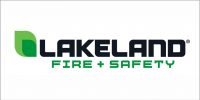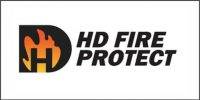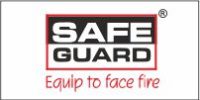 Ensuring safety in the vicinity of tankers, whether transporting hazardous chemicals, petroleum products, or other materials, is of paramount importance. These guidelines are meticulously designed to minimize risks, protect lives, and prevent environmental damage. By adhering to these safety principles, individuals and communities can effectively mitigate the dangers associated with tanker-related incidents.
Ensuring safety in the vicinity of tankers, whether transporting hazardous chemicals, petroleum products, or other materials, is of paramount importance. These guidelines are meticulously designed to minimize risks, protect lives, and prevent environmental damage. By adhering to these safety principles, individuals and communities can effectively mitigate the dangers associated with tanker-related incidents.
Maintaining a Safe Distance
One of the most critical precautions is maintaining a safe distance from a tanker. The recommended minimum distance is 300 meters (approximately 1,000 feet). This buffer zone helps to reduce exposure to potential hazards such as spills, explosions, or toxic fumes. Staying at a safe distance ensures that individuals are out of the immediate danger zone, providing a critical safety margin in case of an incident. It is especially vital for first responders and bystanders to respect this guideline to avoid unnecessary risks.
Immediate Notification of Authorities
In the event of a tanker-related emergency, notifying authorities promptly is crucial. Emergency services, such as fire departments, police, and hazardous materials (HAZMAT) teams, are equipped to manage such incidents effectively. When reporting an incident, provide accurate and detailed information, including:
- The exact location of the tanker.
- The type of hazard observed (e.g., spillage, fire, or leak).
- Any visible identifying details, such as tanker markings or placards indicating hazardous materials.
Timely and accurate reporting enables authorities to respond efficiently, reducing the potential for escalation and ensuring public safety.
Evacuation Procedures
If you find yourself near a tanker-related incident, evacuating the area immediately is essential. Moving to a safe distance minimizes exposure to harmful substances or the risk of injury from explosions. Follow these steps during evacuation:
- Avoid panic and maintain a calm demeanor.
- Use established evacuation routes or move in an upwind direction to avoid inhaling fumes.
- Alert others in the vicinity and assist those who may need help, such as children, elderly individuals, or those with disabilities.
Evacuation should always be prioritized over other actions to ensure personal safety and reduce potential casualties.
Avoiding Ignition Sources
Tanker incidents often involve flammable materials, making the avoidance of ignition sources critical. Common ignition risks include:
- Open flames, such as candles or matches.
- Smoking or discarding lit cigarettes.
- Running engines, including vehicles or machinery.
- Electrical devices that may produce sparks.
Maintaining a spark-free environment in the vicinity of a tanker incident significantly reduces the likelihood of a fire or explosion. Ensuring that vehicles are turned off and avoiding the use of mobile phones or other electronic devices near the site is also recommended.
Leave Handling to Experts
Tanker incidents require specialized knowledge and equipment to manage effectively. It is imperative to refrain from attempting to move, open, or otherwise handle the tanker or its contents. Professional HAZMAT teams are trained to assess and mitigate risks, utilizing advanced tools and techniques to ensure safe containment and cleanup.
Untrained individuals interfering with the site can inadvertently exacerbate the situation, leading to further hazards.
Avoiding Fuel Siphoning
 Siphoning fuel from a tanker is not only illegal but also extremely dangerous. This practice exposes individuals to toxic fumes, flammable substances, and potential explosions. Even a small spark can ignite fuel vapors, causing catastrophic consequences. Moreover, improper handling of fuel can result in environmental contamination, affecting soil and water quality. Always leave fuel management to certified professionals equipped with the necessary safety measures.
Siphoning fuel from a tanker is not only illegal but also extremely dangerous. This practice exposes individuals to toxic fumes, flammable substances, and potential explosions. Even a small spark can ignite fuel vapors, causing catastrophic consequences. Moreover, improper handling of fuel can result in environmental contamination, affecting soil and water quality. Always leave fuel management to certified professionals equipped with the necessary safety measures.
Key Safety Measures
To reinforce safety during tanker-related incidents, consider the following additional measures:
- Stay Alert: Be vigilant about your surroundings and watch for warning signs, such as tanker placards or labels indicating hazardous materials.
- Educate Yourself: Familiarize yourself with basic safety protocols and the types of hazards associated with tankers in your area.
- Use Protective Gear: If you must be in proximity to a tanker, ensure you wear appropriate personal protective equipment (PPE), such as gloves, masks, or goggles.
- Follow Emergency Guidelines: Adhere to instructions provided by authorities and emergency personnel.
Long-Term Safety and Awareness
Raising awareness about tanker safety is a shared responsibility. Communities, industries, and governments must collaborate to educate the public and enforce regulations that minimize risks. Key initiatives include:
- Training Programs: Organizing workshops and drills to prepare individuals for emergencies.
- Regulatory Compliance: Ensuring that tanker operators adhere to safety standards and maintenance protocols.
- Infrastructure Planning: Designing roads, storage facilities, and transport routes with safety considerations in mind.
- Emergency Response Systems: Strengthening the capacity of local emergency services to handle tanker-related incidents efficiently.
Conclusion
Tanker-related hazards pose significant risks, but these can be effectively managed through awareness, preparation, and adherence to safety guidelines. Maintaining a safe distance, notifying authorities promptly, evacuating the area, avoiding ignition sources, and leaving handling to professionals are essential steps in ensuring safety. By prioritizing these measures, individuals and communities can protect themselves and others from potential harm.
Remember, safety always comes first. By respecting the guidelines and taking proactive measures, we can create a safer environment for everyone. Life is precious—let’s protect it.























































